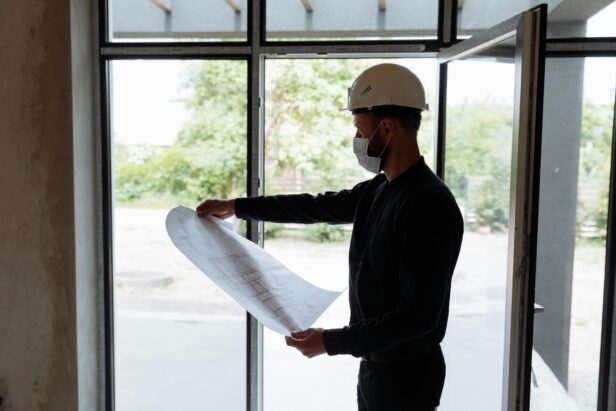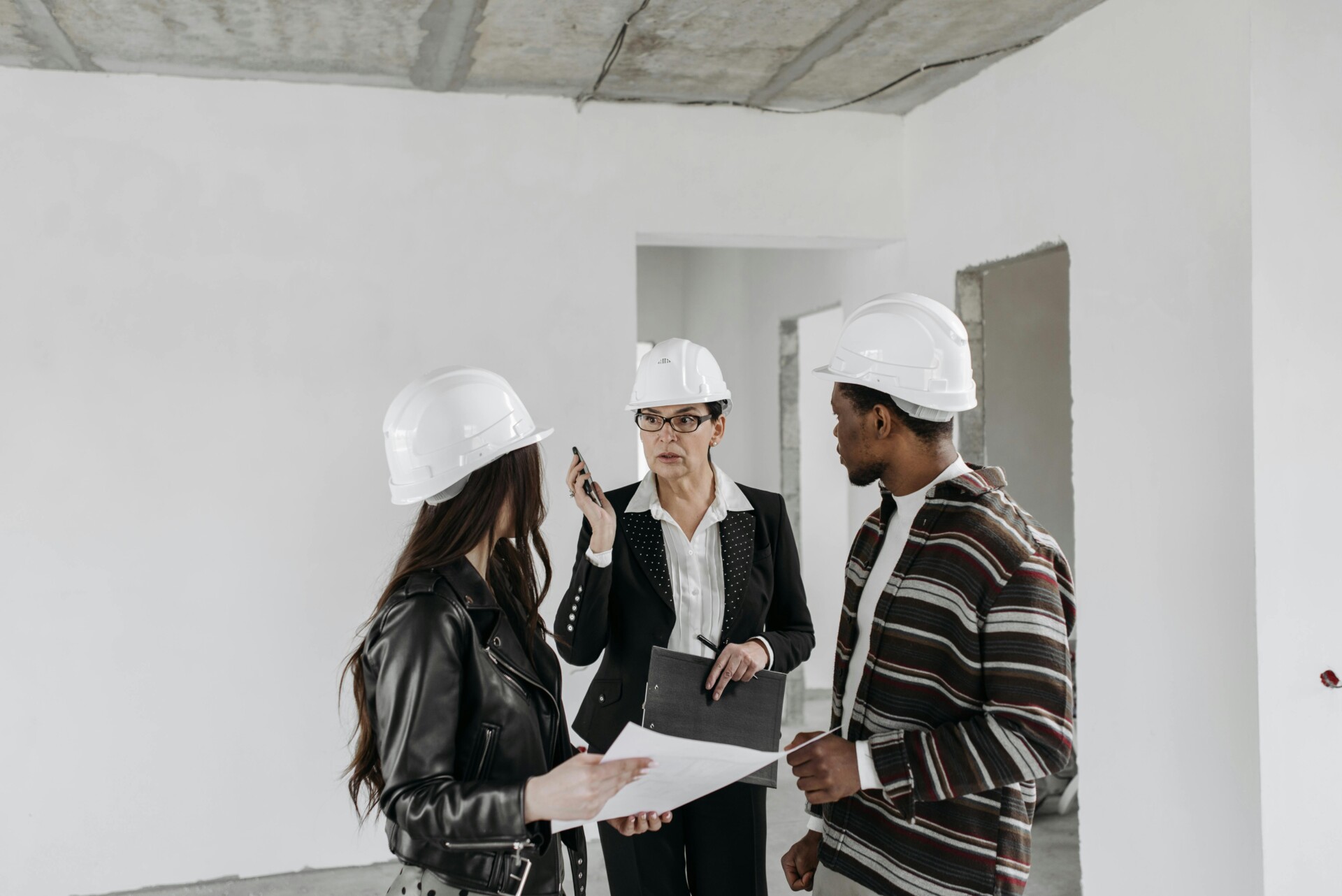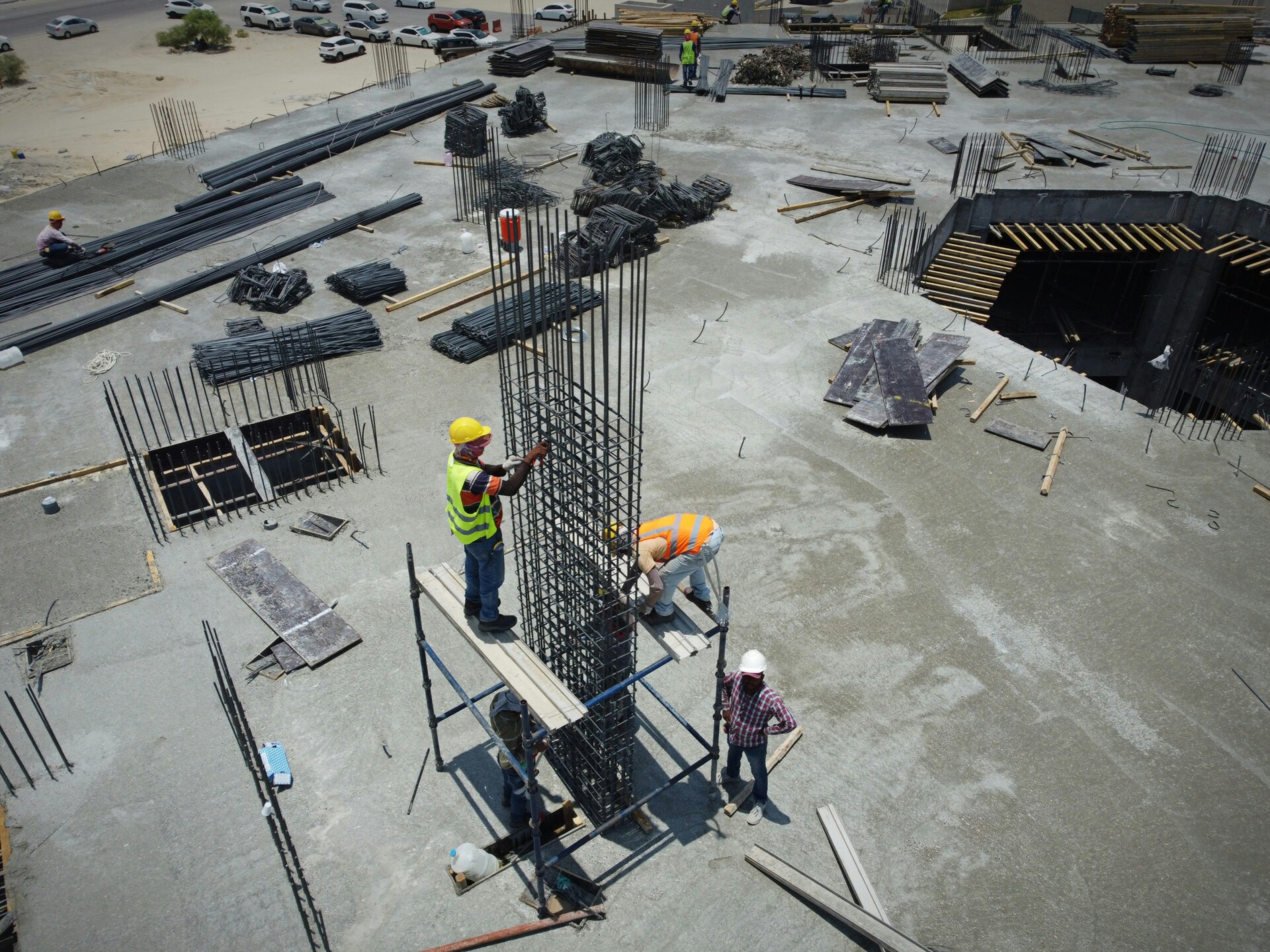Most commercial spaces need substantial work before a business can operate. A Construction build out, also called tenant improvements, transforms raw commercial space into functional business environments tailored to specific tenant needs.
This process typically involves an architect for interior design planning and a contractor like us at EB3 Construction to execute the physical work. Building engineers, landlords, and tenants must coordinate closely to ensure the space meets local codes and building restrictions while serving the tenant’s operational requirements.
What Types Of Build Out Models And Uses Should You Know?
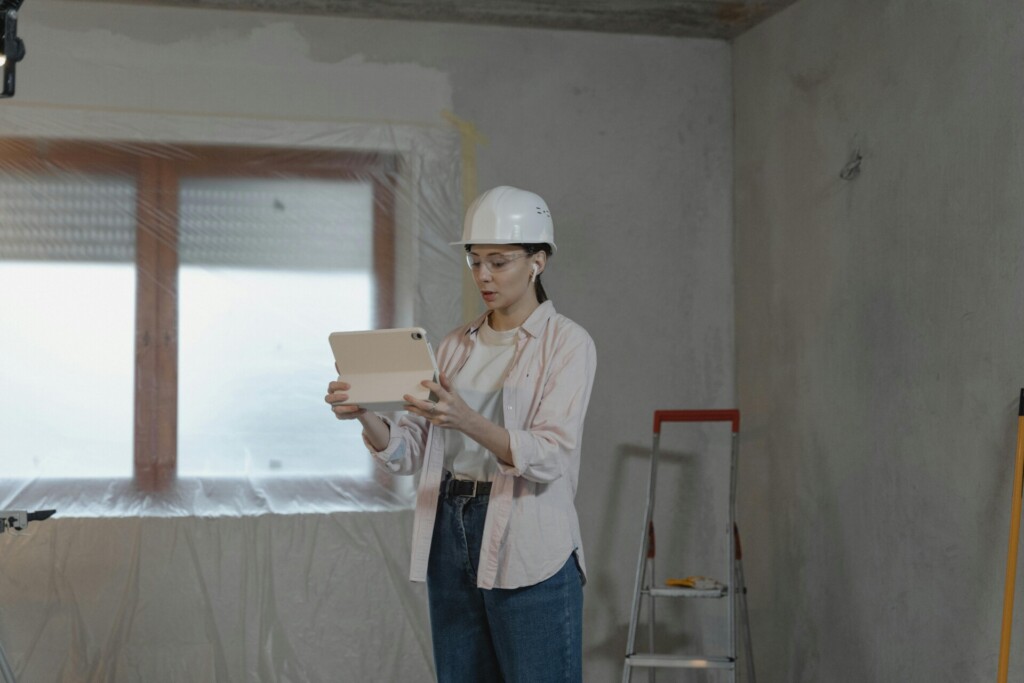
Two primary models shape how Construction build out projects unfold. Each approach assigns different roles and responsibilities between landlords and tenants.
Tenant Build-Out Model
In a tenant build-out, the tenant takes control of the entire process. The tenant hires the contractor, designer, and architect directly. We coordinate with the tenant to execute their vision while ensuring code compliance throughout construction.
This model gives tenants maximum control over design choices and material selections. The tenant manages timelines, budgets, and quality standards. However, this approach requires the tenant to handle permits, approvals, and contractor coordination.
Turnkey Build-Out Model
A turnkey build-out shifts responsibility to the landlord. The landlord completes all work to agreed specifications and delivers a move-in ready space. The tenant simply turns the key and begins operations.
Under this model, we work directly with the landlord to execute the construction plan. The landlord manages permits, approvals, and construction oversight. Tenants have less control over details but avoid the complexity of managing multiple vendors and regulatory requirements.
Strategic Goals Build Outs Accomplish
Construction build out projects serve multiple business objectives beyond basic space modification. Operations become more functional through optimized layouts and workflow improvements. Employee experience improves with better lighting, collaboration areas, and modern amenities.
Technology integration supports current and future business needs. Customer experience benefits from reception areas, meeting spaces, and branded environments. The build out reflects brand image through finishes, colors, and design elements that communicate company values.
These improvements help attract top talent, retain customers, and position the business competitively within its market.
Primary Sectors Using Build Outs
Healthcare build out projects require specialized considerations for patient privacy, medical equipment, and regulatory compliance. Exam rooms, treatment areas, and waiting spaces must meet strict health department standards.
Retail build out focuses on customer flow, product display, and sales optimization. We coordinate fixtures, lighting, and checkout areas that enhance the shopping experience while maximizing revenue per square foot.
Commercial office build outs balance private offices with open collaboration areas. Technology infrastructure, conference rooms, and employee amenities create productive work environments that support both focused work and team interaction.
Each sector has unique requirements that influence material selection, layout design, and regulatory compliance. We adapt our construction approach to meet the specific operational needs and industry standards of each business type.
What Should You Plan Before A Build Out Begins?
Successful build outs start with comprehensive planning that addresses both immediate needs and future growth. We coordinate with property owners and developers to establish clear functional requirements before design work begins. This planning phase prevents costly changes during construction and ensures the finished space supports business operations effectively.
Define Your Space Requirements
Start by documenting specific design and functional needs for your commercial space. Determine how many offices your operations require and identify open areas needed for meetings and collaboration. Consider whether you need a kitchen or lunchroom for employee use, and plan for reception and waiting areas that create the right first impression for visitors.
Storage requirements often get overlooked in initial planning but significantly impact functionality. Account for file storage, equipment storage, and general supplies. Technology infrastructure planning includes server rooms, data cabling pathways, and power requirements for all equipment. Natural light access affects both employee satisfaction and energy costs, so evaluate window placement and supplemental lighting needs early.
Assess Existing Space Conditions
Evaluate whether your target space is a blank slate requiring full build out or contains existing tenant finishes. Spaces with prior tenant improvements may require selective demolition to accommodate your specific needs. We assess existing conditions thoroughly to determine what can be reused and what requires removal.
This assessment directly impacts project timeline and costs. Demolition work must align with code requirements and building restrictions. Early evaluation prevents surprises during construction and helps establish realistic budgets for the scope of work required.
Coordinate Early With Design Professionals
Early coordination with an architect and EB3 Construction aligns project scope with code requirements and building limitations. We review space planning concepts against local building codes, fire safety requirements, and accessibility standards. This coordination identifies potential challenges before they impact construction schedules.
Design professionals help translate functional needs into compliant layouts. We work with architects to ensure space plans support workflow while meeting all regulatory requirements. Early alignment prevents design changes that delay permits and increase costs.
Verify Core Building Systems
Check existing electrical systems to confirm capacity for your operational needs. Electrical upgrades can significantly impact budgets, so early evaluation helps establish realistic expectations. We assess panel capacity, circuit availability, and power distribution to support your equipment and lighting requirements.
Working with existing plumbing when possible reduces construction costs and complexity. Evaluate current plumbing locations against your space plan to identify opportunities for reuse. New plumbing runs require careful coordination with structural elements and other building systems.
Specify doors and hardware that meet both functional and code requirements. Consider security needs, accessibility compliance, and traffic flow patterns when selecting door types and locations. Include finishes and trim selections in your planning to ensure cohesive design and accurate cost estimates.
What Is The Typical Build Out Process And What Approvals Are Needed?
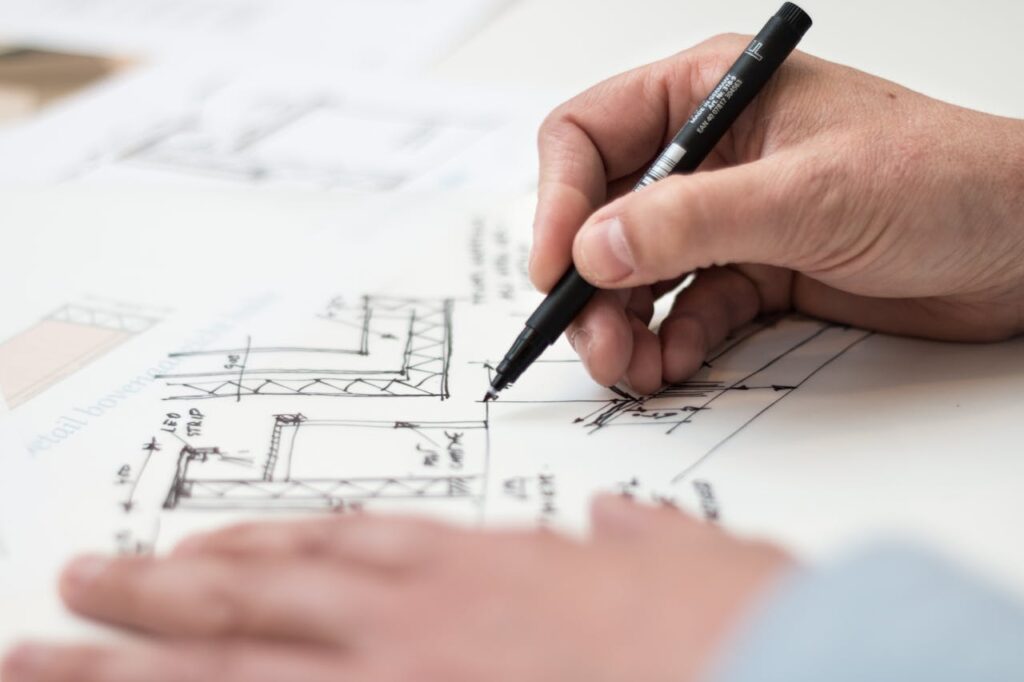
Every successful build out follows a structured sequence of phases that ensures your space meets both functional needs and regulatory requirements. We manage these stages systematically to avoid delays and cost overruns that can derail your project timeline.
The consultation and planning phase establishes the project foundation. During this initial stage, we align with the tenant, architect, and building stakeholders to clarify the vision and establish realistic expectations. This phase determines whether existing systems can support your operational requirements and identifies potential challenges before construction begins.
Design Development And Approvals
Design approvals form the critical bridge between vision and construction reality. The architect creates detailed drawings that specify spatial layouts, mechanical systems integration, and finish selections. These documents must satisfy both tenant requirements and building standards before moving forward.
We coordinate closely with design teams to ensure constructability and code compliance from the outset. This collaboration prevents costly redesigns during later phases when changes become exponentially more expensive. The design review process typically involves multiple iterations as building requirements and tenant needs are balanced.
Permits And Zoning Compliance
Securing permits represents one of the most time-sensitive aspects of any build out process. The architect prepares comprehensive permit documents that demonstrate code compliance across all building systems and spatial configurations. These submissions require detailed specifications for electrical loads, plumbing fixtures, fire safety measures, and accessibility compliance.
Permit approval timelines vary significantly based on project complexity and local jurisdiction workload. Simple office configurations might receive approval within weeks, while complex installations requiring specialized systems can extend the process for several months. We factor these variables into project scheduling to prevent construction delays.
Zoning approvals ensure the proposed use aligns with local land use regulations. Some build outs require zoning variances or special use permits, particularly for restaurants, healthcare facilities, or operations with unique requirements. We identify these needs early in planning to avoid surprises later.
Construction Phase Management
The construction phase brings together multiple subcontractors working in coordinated sequence. We manage carpentry work that creates the spatial framework, followed by rough-in phases for electrical and plumbing systems. This sequencing ensures that infrastructure installation occurs before finish work begins.
Electrical work encompasses power distribution, lighting circuits, and technology infrastructure installation. Modern commercial spaces require robust electrical systems to support everything from basic lighting to sophisticated technology platforms. We verify that existing building electrical capacity can handle increased loads or coordinate upgrades as needed.
Plumbing installations focus on fixture placement, water supply routing, and drainage connections. We assess existing plumbing infrastructure early to determine whether new connections are feasible or if system modifications are required. This evaluation helps control costs by maximizing use of existing infrastructure where possible.
Final Inspection And Project Handover
Code compliance verification occurs through systematic inspections at key construction milestones. Building inspectors review electrical rough-in, plumbing installation, fire safety systems, and accessibility features before authorizing finish work to proceed. These inspections ensure that hidden infrastructure meets regulatory standards before being concealed behind walls.
The final inspection confirms that all work complies with approved plans and local building codes. This comprehensive review covers everything from exit signage placement to HVAC system operation. Only after receiving final approval can occupancy certificates be issued, allowing tenant move-in to proceed.
Project handover includes comprehensive documentation of all installed systems, warranty information, and operational instructions. We provide detailed records that support ongoing maintenance and future modifications. This documentation proves invaluable for building management and future tenant improvement projects.
How Are Build Out Costs And Responsibilities Handled?
Build-out expenses fall into two main categories that require careful tracking. Hard costs cover the physical construction work that directly transforms your space. These expenses include HVAC installations, electrical system upgrades, plumbing modifications, materials like drywall and steel framing, flooring installation, trim work, and paint finishes.
Soft costs represent the indirect expenses necessary to complete your project legally and professionally. Engineering services for permitting, legal fees for lease negotiations, architectural fees for design work, inspection costs, and various taxes make up this category. We often see these soft costs account for 15-20% of total project budgets in commercial build-outs.
Tenant Improvement Allowance Structure
Many commercial leases include a tenant improvement allowance from the landlord to offset build-out expenses. This allowance typically covers $25 to $60 per square foot, depending on market conditions, lease length, and property type. Landlords generally prefer these funds go toward hard costs that add permanent value to their property.
The allowance operates as a reimbursement system rather than upfront cash. Tenants pay amounts beyond the allowance out of pocket. Any construction expenses exceeding the agreed allowance become the tenant’s responsibility, which can create budget pressure if scope changes during construction.
Lease Terms And Project Control
Lease agreements must clearly define who manages the construction project and handles payment responsibilities. Three common arrangements emerge in commercial build-outs. Tenant-controlled projects give you authority to select contractors and manage timelines, but require active oversight. Landlord-controlled build-outs shift project management to property owners while limiting your design input. Turnkey arrangements place all responsibility on landlords but often reduce customization options.
We coordinate with landlords under all three structures, but tenant-controlled projects typically deliver better alignment with your operational needs. Payment terms vary significantly based on project control. Some landlords provide allowance funds upfront, while others reimburse costs after completion and lien waivers.
Budget Management And Quality Balance
Setting a realistic budget prevents costly surprises during construction. Overbuilding leads to budget overruns that strain finances and delay occupancy. Expensive finishes, unnecessary structural changes, and excessive technology infrastructure drive costs beyond practical limits.
Underbuilding creates different problems. Cutting corners on essential systems, choosing inferior materials, or skipping necessary code compliance work results in operational issues and potential safety violations. We help clients find the balance between functional needs and budget constraints.
Market conditions affect allowance negotiations significantly. In tenant-favorable markets, landlords offer higher allowances to attract quality tenants. Competitive markets may reduce landlord contributions, shifting more costs to tenants.
Franchise Location Considerations
Franchise operations face additional requirements that impact build-out costs and responsibilities. Franchisors typically mandate strict brand standards for interior design, signage, equipment specifications, and layout configurations. These requirements limit design flexibility but ensure brand consistency across locations.
Many franchisors provide support systems to streamline build-out processes. Standardized construction plans reduce architectural fees and permit preparation time. Approved vendor lists offer pre-negotiated pricing and proven performance records. Some franchise systems include project management assistance to coordinate between landlords, contractors, and local authorities.
Franchisors often negotiate group discounts with equipment suppliers and specialty contractors. Site evaluation services help assess lease terms and construction feasibility before signing agreements. Permitting guidance specific to franchise requirements can accelerate approval timelines in complex jurisdictions.
Conclusion And Next Steps For A Construction Build Out
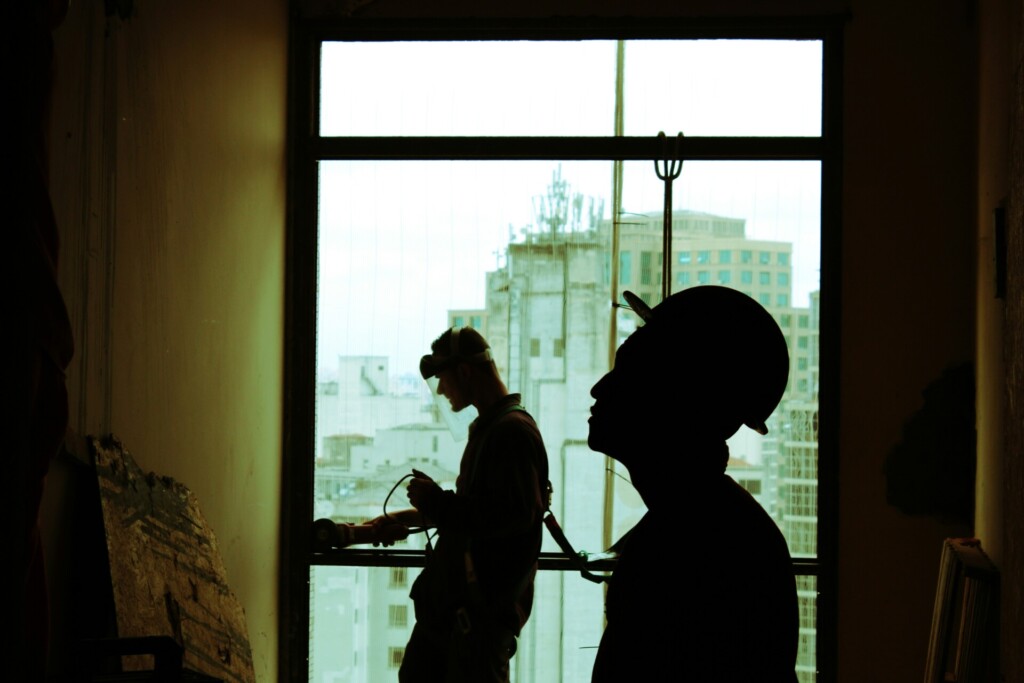
A Construction build out represents a critical investment in making commercial space work for specific business operations. The process requires careful planning from the initial concept through final occupancy. Success depends on early coordination between all stakeholders and realistic expectations about timelines and costs.
Clear communication with your architect and contractor establishes the foundation for efficient execution. We coordinate with building engineers to verify existing systems can support planned improvements. Electrical capacity assessments and plumbing evaluations often reveal cost-saving opportunities that prevent expensive surprises during construction. These technical reviews inform budget decisions and help prioritize which upgrades provide the greatest operational value.
Ready to transform your commercial space? Contact EB3 Construction to discuss your build-out requirements and next steps.

